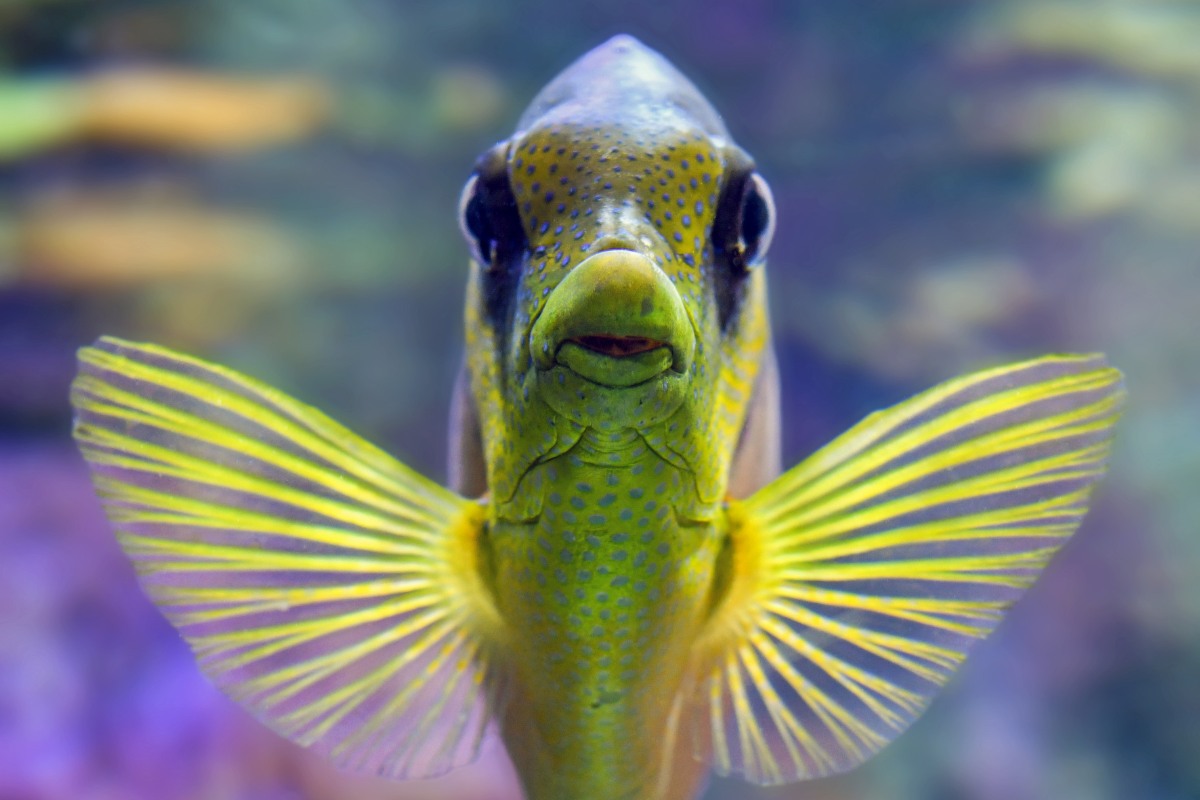Disclosure: This post may contain affiliate links, meaning I get a commission if you decide to make a purchase through my links, at no cost to you.
The vibrant colors of the scales and fins in the ocean and rivers astound us. But do fish see the same way we do? Are the colors as incredible to them as they are to us?
Have you ever wondered just how these underwater creatures perceive and interpret the colorful world around them? Fish vision is a remarkable evolutionary adaptation that has shaped the survival strategies of aquatic life everywhere.

Table of Contents
How Fish See
There is a common misconception that fish are colorblind, but recent scientific discoveries have shattered this notion. Researchers have found that many fish species possess a remarkable visual system that far surpasses the capabilities of human eyes. Humans are equipped with three types of color-sensitive cones in our retinas. These cones allow us to perceive a wide range of hues. Some fish species boast an even more advanced visual system.
Goldfish, for instance, have four distinct types of color-detecting cones in their eyes. This allows them to perceive a broader spectrum of colors than their land-dwelling counterparts. This specialized visual acuity is not limited to just the humble goldfish. Many other fish species, including zebrafish, share this remarkable adaptation.

How fish process color information differs from the complex neural pathways humans and other mammals employ. Zebrafish detect colors using a more “primitive” method. Their color information is processed at the first synapse of the visual system.
In humans, color recognition is distributed across the eyes and brain in ways that are still not completely understood. Zebrafish, though, solve this basic problem themselves at the earliest possible site, in the photoreceptors’ synapses.
This elegant solution to the “color puzzle” highlights the remarkable adaptations that have evolved in the aquatic realm.
The Aquatic Chromatic Landscape
The underwater environment presents a unique challenge when it comes to the perception of light and color. Unlike the relatively stable visual landscape of the terrestrial world, the aquatic environment faces constant changes in light intensity. Its spectral composition fluctuates continuously.
As light travels through water, it undergoes a process of selective absorption. In this process, certain wavelengths of the visible spectrum are absorbed more readily than others. This phenomenon results in a gradual shift in the dominant colors visible at different depths.
In the uppermost layers of the water column, warm hues like reds and oranges are the most prominent. These wavelengths are quickly absorbed by the water. As you venture deeper, the cooler blues and purples become the dominant colors. They can penetrate the water column more effectively.
Fish have evolved remarkable strategies to navigate this ever-changing chromatic landscape. Many species, such as the lake trout, rely heavily on their visual ability for foraging and predator avoidance. These fish can change their location to improve their visual perception. They adjust their depth to balance light availability with the risk-reward ratio of prey-hunting activities.

The Secrets of Fish Color Vision
While the general principles of fish vision are well understood, the intricacies of their color perception continue to intrigue researchers. At the cellular level, the visual system of fish is similar to that of other vertebrates. It is composed of two primary photoreceptor types: cones and rods. Cones are responsible for color vision, while rods are more sensitive to light intensity, enabling vision in low-light conditions.
The number and distribution of these photoreceptors can vary significantly among fish species. This variation reflects their unique adaptations to their respective environments. For example, some deep-dwelling fish species may have more rods to enhance their low-light vision. In contrast, surface-dwelling species may have a greater concentration of cones to better perceive color.
In addition to the standard visible spectrum, some fish species can detect ultraviolet (UV) light. This specialized visual adaptation is particularly useful for locating prey. It helps in identifying mates and navigating their environments. Certain objects and patterns may be more readily visible under UV illumination.
Many fish species, such as the deep-dwelling burbot, have evolved the ability to perceive and respond to bioluminescent light sources. They can also detect artificially charged light sources, even in the darkest depths of their aquatic habitats.

The development of advanced color vision in fish is not merely a curious adaptation. Fish gain a distinct advantage in tasks such as foraging, predator avoidance, and social interactions by perceiving a wider range of colors.
For instance, the shift in color vision observed in certain salmonid species. Younger individuals have a higher sensitivity to UV light to detect zooplankton. Older fish develop a greater sensitivity to colors that aid in detecting prey fish. This difference is part of the dynamic nature of this evolutionary process.
Conservation Implications: Protecting Aquatic Habitats
The remarkable adaptations of fish vision have important implications for conservation efforts. Resource managers need to understand the specific visual requirements and sensitivities of various fish species. This understanding allows them to make more informed decisions about habitat preservation. It also aids in assessing water quality and the potential impacts of human activities on aquatic ecosystems.
For example, suspended sediments or algal blooms can drastically alter the light conditions available to fish. They change the color spectrum, which can disrupt foraging. Fish might also face challenges in predator avoidance and reproductive behaviors. By monitoring these environmental factors, we can help maintain the long-term viability of diverse fish populations. Implementing appropriate conservation measures is crucial for the ecosystems they inhabit.













